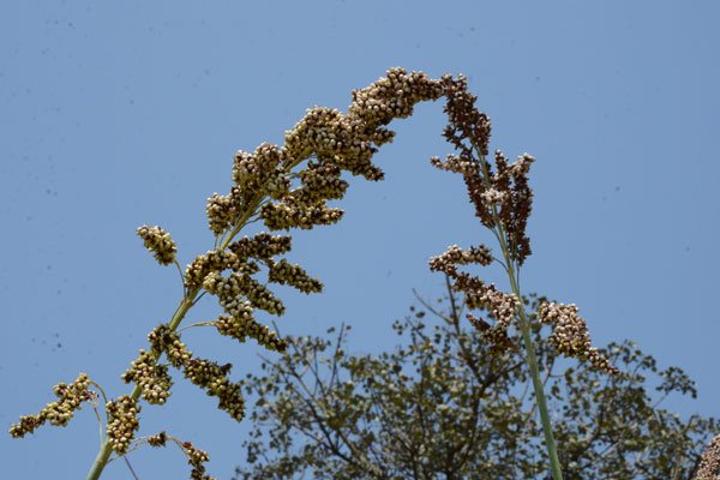Africa-Press – Uganda. Where can I get market for sorghum?
Michael Serwadda.
Sorghum is an important food crop in Uganda. It is mainly grown in the southwestern highlands, especially in Ntungamo and Kabale districts, and in eastern and northern regions of Uganda.
Sorghum is the third most important staple cereal food crop as it occupies up to 400,000ha of arable land.
Uganda is the second largest producer of sorghum after Tanzania, in East Africa.
Growing sorghum offers immense economic benefits given its large spectrum of uses. First of all, sorghum grains are used for human nutrition, where it is transformed into flour for producing bread, porridge and other dishes.
It is now increasingly becoming the foundation for food and beverage industries.
Agronomy
Sorghum grows at an optimal annual temperature range between 22-35 degrees Celsius, and rainfall between 400-600mm, at an altitude between 0-2,500m above sea level.
The crop is best propagated using seeds, cultivated in rows spaced at 50-60cm apart with hill-to-hill spacing of 12-15cm. Weeds in sorghum can be controlled through chemical sprays.
The crop is affected by major pests at different stages of growth including cutworms, armyworms, and seed beetles, as well as foliar diseases such as leaf blight and dwarf mosaic where rainfall and humidity are high.
The crop matures after four months, although traditional varieties in Kabale can take up to seven months before they mature.
Market
Sorghum is mainly consumed in Katakwi, Kumi, Soroti, Pallisa and Tororo districts in the east, in Karamoja sub-region of the north-east, parts of northern Uganda and in the highlands of south western Uganda.
It is pressed into a wide variety of nutritious traditional foods such as semi leavened bread, dumplings, fermented and non- fermented porridge.
The grain is sometimes an ingredient of livestock feed while the stover is used for forage. The forage may be fed sole or mixed with brewer’s mash.
Since 2002, Nile Breweries Ltd has been promoting the cultivation of Epuripur type of sorghum, which is used to make Eagle Extra and Eagle Lager beers. Epuripur, an early maturing variety, was developed by Serere Agricultural and Animal Research Institute) alongside Sekedo, to improve food security. The variety yield ranges from 2500-3,000 kg/ha under good management.
Apart from the beer brewing industry, sorghum is also gaining markets in the production of dietary packed foods for children.
*Answered by Peter Maganda, an agronomist with Gulu Agricultural Development Company (GADC).
_____________________________________________________________________________________
What vegetables cannot be planted together?
Gloria Nankya.
Sometimes it is observed that in spite of all the healthy ways of planting and maintenance, some vegetable plants do not go together. This incompatibility could be because the needs of the plants may be different or the plants could be competing with each other for major resources.
Some plants compete for nutrients or space, or they attract damaging insects or fungus.
Some incompatible plant combinations are; tomatoes and beans, garlic or onions with beans or peas, mint and onions with asparagus, pole beans with beets as well as potatoes with cucumber, pumpkins, radish or tomatoes.
*Answered by Doreen Nampamya, research associate with Korea Programme on International Agriculture (Kopia).
Compiled by George Katongole |
Send your questions to [email protected]
For More News And Analysis About Uganda Follow Africa-Press






